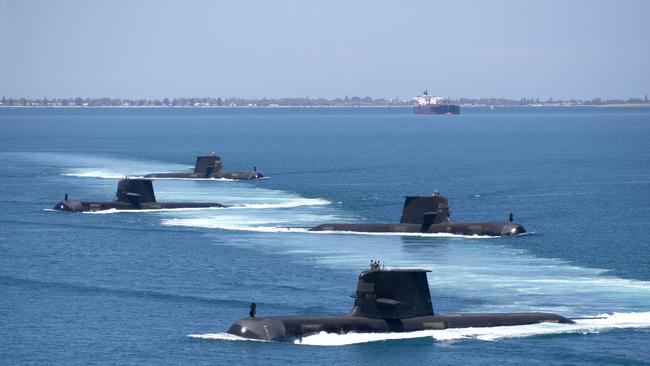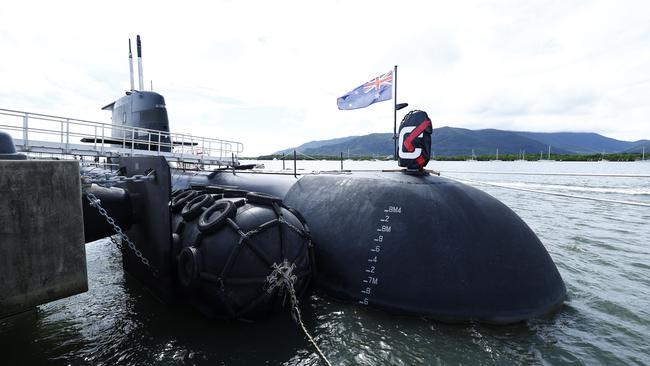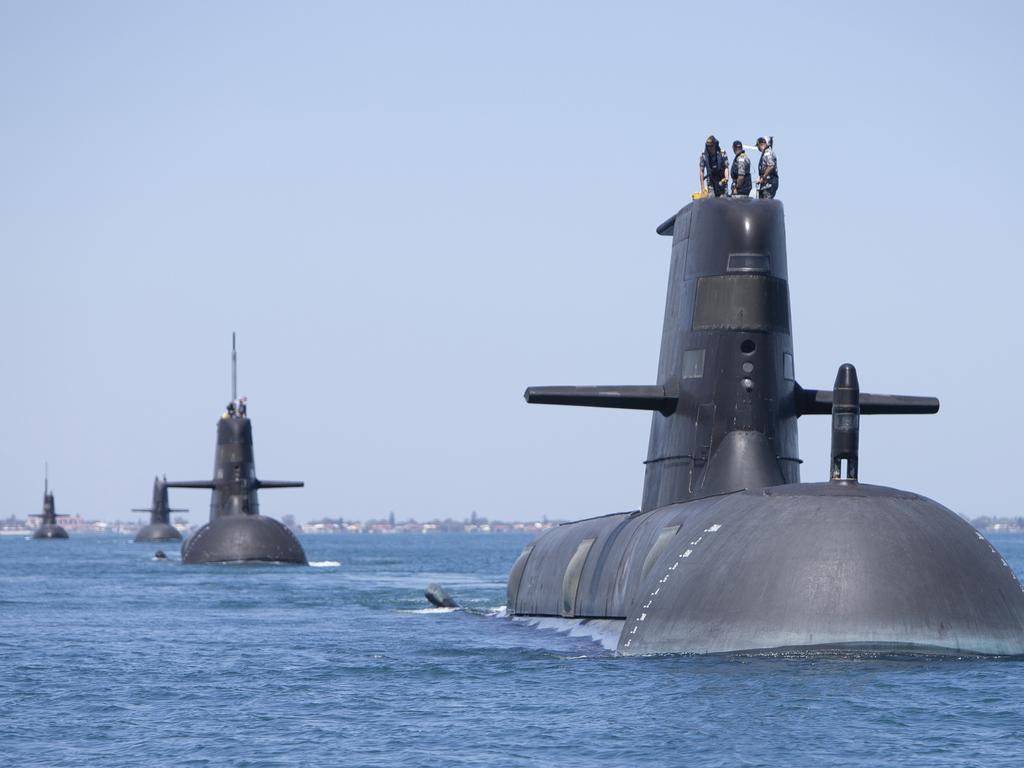New report warns plan to extend life of the Collins Class submarine is a ‘high risk endeavour’
Labor has been warned the $5bn plan to extend the life of the navy’s ageing fleet of Collins-class subs for another decade is a perilously high-risk.

The Albanese government has been warned that the $5bn plan to extend the life of the navy’s ageing fleet of Collins-class submarines for another decade is a perilously high-risk endeavour that is not guaranteed to succeed.
Australia’s ability to defend itself using submarines over the next decade would be in jeopardy if the plan to extend the life of the Collins-class fleet cannot be achieved, given that the first of the nuclear-powered AUKUS submarines is not due to arrive in Australia until 2032.
An interim report and verbal briefings delivered to the government have revealed significant technical challenges to the planned $5bn Life of Type Extension to the six Collins-class submarines due to begin in 2026.
The classified assessment of the LOTE project, by former US navy deputy assistant secretary Gloria Valdez, was commissioned by the government last October to assess the viability of the plan to extend the life of the Collins boats to ensure that Australia “retains an enduring, potent and agile submarine capability”.
It is understood that Ms Valdez’s interim report delivered this month outlined extensive technical risks to the LOTE program, saying the size and scope of the planned extensions had never before been attempted on the bespoke Collins-class boats, which were built between 1990 and 2003.

Ms Valdez expressed concern that the government-owned submarine company ASC lacked the necessary design and engineering experience to extend the life of the submarines for a full decade.
She is also understood to have recommended that the Collins-class submarine’s original Swedish designer, SAAB Kockums, be given a larger role in ensuring the project’s success.
The LOTE will need the submarines to be largely rebuilt, with their hulls cut in half to replace the propulsion systems, diesel engines, generators, and the power conversion and distribution systems as well as upgraded command and control systems.
The chief executive and managing director of ASC Stuart Whiley told Senate estimates hearings in February that there were “no guarantees” with the LOTE outcome, saying it was a “first-of-class engineering task” that had not been done before and was “certainly a challenging technical program”.
The Minister for Defence Industry, Pat Conroy, declined to comment on the interim report but told The Australian “this is a complex project and the government is working through this process in a methodical manner”.
“I have regular discussions with Gloria Valdez and continue to receive updates, which help inform how we manage this important capability,” he said.
ASC is currently working on the detailed design review of the LOTE plan, which it hopes to deliver to the government by the end of the year.
The six submarines were originally due to retire progressively every two years from 2026 but under the LOTE plan they will each undergo a complete two-year refit aimed at keeping them in the water for another decade.
If the LOTE is successful, it would mean that the Collins-class fleet would continue to operate until 2038, when the first boat HMAS Farncomb, would be retired, until 2048 when the last submarine would be retired.

However, many naval experts believe that by the late 2030s and ’40s, the Collins-class submarines, which were designed in the 1980s, would be sitting ducks for newer, more sophisticated submarines being built by China.
They also say it is unrealistic to expect that each Collins-class submarine can be refitted under the complex LOTE plan in just two years, leading to a likely slippage in the schedule.
The need to extend the life of the Collins-class submarines has become an urgent priority since the formation of the 2021 AUKUS pact in which the plan to acquire French Attack-class boats was scrapped in favour of acquiring a fleet of nuclear-powered boats.
The three US built Virginia-class submarines under that deal are not due to arrive in Australia until 2032, 2035 and 2037.
They will be followed by the construction in Adelaide of the next generation British-designed SSN-AUKUS submarine, the first of which is not expected to be delivered until the early 2040s.
The prospects of slippage in the delivery dates of the Virginia-class and SSN-AUKUS is considered very high, given the complexities involved, making it even more essential that the LOTE program succeeds.
Although the AUKUS plan to acquire Virginia-class submarines from the US has received broadly bipartisan support in Washington, some Republicans have questioned whether the move would undermine US naval capability.
They point to the fact that the production of Virginia-class boats has fallen behind scheduled US navy targets even before the US sells any of its submarines to Australia.
The presumptive Republican nominee for president Donald Trump last week gave his strongest signal yet that he would back the AUKUS plan for Australia to acquire US submarines if he becomes president, telling former prime minister Scott Morrison in a meeting in New York that he believed AUKUS played a critical role in deterring China.
It was the first public comments made by Mr Trump in support of AUKUS, a three-nation pact that was jointly created by the administration of Mr Trump’s presidential rival, Joe Biden.








To join the conversation, please log in. Don't have an account? Register
Join the conversation, you are commenting as Logout